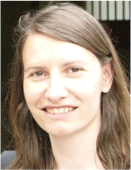Sediment provenance analysis of the Permian from the Perth Basin using an automated Raman heavy mineral technique
Stuart Munday A E , Anne Forbes A , Brenton Fairey B , Juliane Hennig-Breitfeld B , Tim Breitfeld B , Tim Hicks C , Jordan Sheehan D and Bow Kocijan DA Chemostrat Australia Pty Ltd, 1131 Hay Street, West Perth, WA 6005, Australia.
B Chemostrat Ltd, Unit 1 Ravenscroft Court, Buttington Cross Enterprise Park, Welshpool, Powys SY21 8SL, Wales.
C Mitsui E & P Australia Pty Ltd (MEPAU), Level 11/2 The Esplanade, Perth, WA 6000, Australia.
D Beach Energy, Level 8/80 Flinders St, Adelaide, SA 5000, Australia.
E Corresponding author. Email: stuartmunday@chemostrat.com
The APPEA Journal 61(2) 688-694 https://doi.org/10.1071/AJ20080
Accepted: 23 February 2021 Published: 2 July 2021
Abstract
The Early Permian in the onshore Perth Basin has experienced several significant discoveries in the last 8 years. Beginning with the play-opening Waitsia discovery (AWE), this was followed more recently by the Beharra Springs Deep (Beach Energy) and West Erregulla (Strike) discoveries. In addition, Late Permian sands (Dongara and Wagina sandstones) have long been recognised as excellent reservoirs in the basin. This study attempts to better understand the provenance of the Early and Late Permian sediments using automated Raman spectroscopy as a tool to identify variations in heavy mineral assemblages. Automated Raman spectroscopy analysis of heavy minerals minimises operator bias inherent in more traditional optical heavy mineral analyses. These data are integrated with publicly available chemostratigraphy data to enable a better understanding of sediment provenance variations with stratigraphy. In addition, publicly available detrital zircon geochronological data are incorporated to help further understand sediment sources. A transect of wells is investigated, from Arrowsmith-1 in the southernmost extent to Depot Hill-1 and Mt Horner-1 in the north. While the elemental (chemostratigraphy) data suggest some changes in sediment provenance through the Permian of the Perth Basin, the Raman heavy mineral data confirm a number of sediment provenance changes both at key formational boundaries (e.g. top Kingia sandstone) and complex sediment provenance variation within reservoir sandstone units. These results are integrated to demonstrate how sediment provenance holds the key to understanding controls on variable reservoir quality as well as understanding the early infill in this basin.
Keywords: Perth Basin, Permian, heavy mineral provenance, Raman spectroscopy, chemostratigraphy, Kingia sandstone, High Cliff sandstone, Dongara sandstone, Wagina sandstone, Irwin River Coal Measures.

Stuart Munday has worked for Chemostrat for 4 years, based initially in New Zealand and now in Perth working on projects throughout the APAC region. Prior to this, he was a senior geologist at New Zealand Oil and Gas but spent most of his career at BG Group, where he worked on various North African assets prior to being posted to QGC in Brisbane. Stuart had worked previously for Roc Oil in the North Sea and at Exploration Consultants Ltd, where his focus was on the basins of sub-Saharan Africa. He has a BSc in geology, an MSc in petroleum geology and is a fellow of the Geological Society of London. |

Anne Forbes has a BA (Hons) and MSc from the University of Cambridge in natural science and a PhD from the Open University in volcanology, where she studied the interaction of lava flows with ice and water. She joined Chemostrat Australia in January 2014 and has since undertaken chemostratigraphy studies in most of Australia’s principal petroleum producing basins. She is a member of PESA and Geological Society of London. |

Brenton Fairey obtained his BSc (Hons) and MSc from Rhodes University, South Africa and his PhD in geology from the National University of Ireland, Cork. He has worked for Chemostrat for 3 years and manages Chemostrat’s Sandtrak sediment provenance team. He has undertaken sediment provenance studies in frontier and mature basins across various regions, including the UK, Canada, South America, West Africa and the North West Shelf of Australia. He is a member of GSSA. |

Juliane Hennig-Breitfeld has a diploma (MSc) from the Technical University Bergakademie Freiberg, Germany and a PhD from Royal Holloway University of London where she studied magmatism and exhumation processes in extensional settings on the island of Sulawesi as well as provenance for paleogeographic reconstructions. Following on from her PhD, she continued to work with the SE Asia Research Group as a post-doc studying basement ages and provenance of sedimentary successions in NW Borneo and SE Vietnam for sediment routing pathways and paleogeographic reconstructions. She joined Chemostrat Ltd as a senior geologist in January 2020 and has since worked in the Sandtrak provenance team on various projects in Australia, Brunei, Tunisia and the North Sea. She is a member of GSA, AAPG and SEAPEX. |

Tim Breitfeld has a diploma (MSc) in geology/palaeontology from the Technical University Bergakademie Freiberg and a PhD in earth sciences from Royal Holloway University of London where he was a research student for the SE Asia Research Group (SEARG) analysing clastic sedimentary rocks in Borneo. After his PhD, he worked as a research fellow for SEARG at Royal Holloway, studying age and character of igneous and metamorphic basement rocks, as well as sedimentology and provenance of clastic sediments in the South China Sea region to reconstruct Cenozoic drainage. Tim joined Chemostrat Ltd in January 2020 where his focus is mainly on heavy mineral and detrital zircon provenance in SE Asia, Europe and Australia. He is a member of AAPG and SEAPEX. |

Tim Hicks is a development geologist at MEPAU Ltd. Tim attended Queensland University of Technology where he completed a BAppSc (Hons) in geology, and an LLB and an LLM in natural resources law. Tim has been employed in the Australian resources sector since 1995 in various capacities, ranging from field exploration projects through to legal advisor. Tim presently works on MEPAU’s development and production assets, primarily in the Perth Basin. He is a member of AAPG, IAS, SEPM, SPE and PESA. |

Jordan Sheehan graduated from The University of Adelaide where he attained a BSc Hons from the Australian School of Petroleum and Energy Resources. He has worked as a geologist in the Cooper Basin and most recently as a geologist in the Perth Basin team at Beach Energy. He is a member of PESA. |

Bow Kocijan currently holds the position of Manager Exploration and Appraisal Perth Basin for Beach Energy. Prior to his engagement in the Perth Basin, he has previously worked on both onshore and offshore assets in Australia, New Zealand, SEA and the USA. He graduated from Monash University with a BSc Hons in geological and earth sciences. He is a member of PESA and AAPG. |
References
Andò, S., Bersani, D., Vignola, P., and Garzanti, E. (2009). Raman spectroscopy as an effective tool for high-resolution heavy-mineral analysis: examples from major Himalayan and Alpine fluvio-deltaic systems. Spectrochimica Acta Part A: Molecular and Biomolecular Spectroscopy 73, 450–455.| Raman spectroscopy as an effective tool for high-resolution heavy-mineral analysis: examples from major Himalayan and Alpine fluvio-deltaic systems.Crossref | GoogleScholarGoogle Scholar |
Chemostrat Australia Pty (2019). Elemental and Provenance analysis of Waitsia-1, Perth Basin, WA. DMIRS sampling approval No. G32895. Available at: https://wapims.dmp.wa.gov.au/wapims, February 2021.
Dunkl, I., von Eynatten, H., Andò, S., Lünsdorf, K., Morton, A., Alexander, B., Aradi, L., Augustsson, C., Bahlburg, H., Barbarano, M., and Benedictus, A. (2020). Comparability of heavy mineral data–the first interlaboratory round robin test. Earth-Science Reviews 211, 103210.
| Comparability of heavy mineral data–the first interlaboratory round robin test.Crossref | GoogleScholarGoogle Scholar |
Hubert, J. K. (1962). A ZTR maturity index and the interdependence of the composition of heavy mineral assemblages with gross composition and the texture of sandstones. Journal of Sedimentary Research 32, 440–450.
| A ZTR maturity index and the interdependence of the composition of heavy mineral assemblages with gross composition and the texture of sandstones.Crossref | GoogleScholarGoogle Scholar |
Mange, M. A., and Maurer, H. F. W. (eds), (1992). ‘Heavy Minerals in Colour.’ p. 147. (Chapman & Hall: London).
Mitsui E & P Australia (2019). Perth Core Library sampling activity report. Perth Core Library Sampling Approval No. G004134. Available at: https://wapims.dmp.wa.gov.au/wapims, February 2021.
Morton, A. C., and Hallsworth, C. (1994). Identifying provenance-specific features of detrital heavy mineral assemblages in sandstones. Sedimentary Geology 90, 241–256.
| Identifying provenance-specific features of detrital heavy mineral assemblages in sandstones.Crossref | GoogleScholarGoogle Scholar |
Tupper, N., Matthews, E., Cooper, G., Furniss, A., Hicks, T., and Hunt, S. (2016). The Waitsia Field, onshore North Perth Basin, Western Australia. The APPEA Journal 56, 29–44.
| The Waitsia Field, onshore North Perth Basin, Western Australia.Crossref | GoogleScholarGoogle Scholar |


